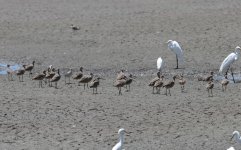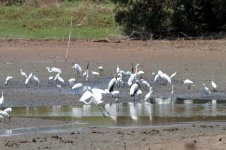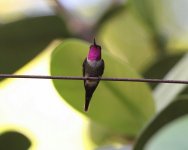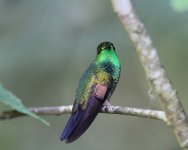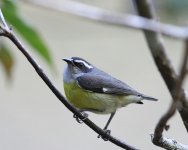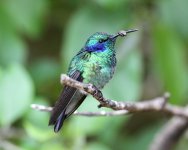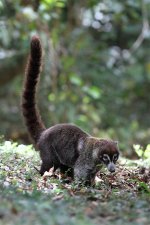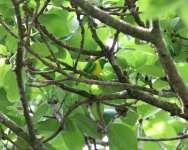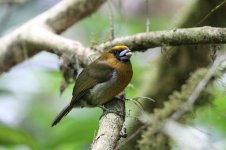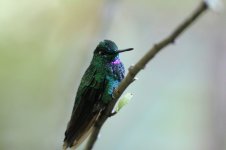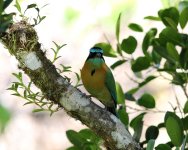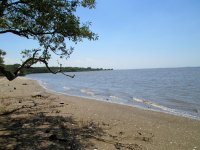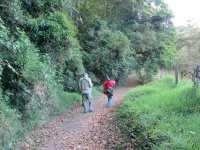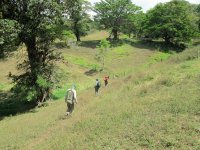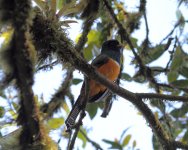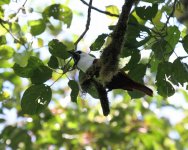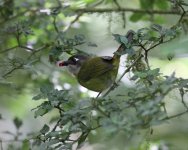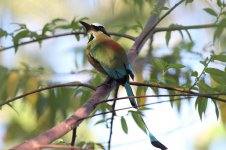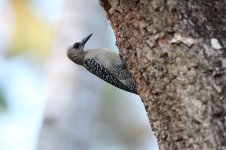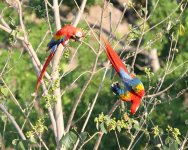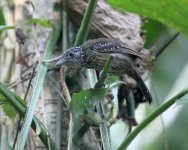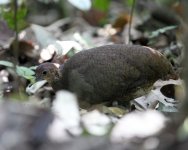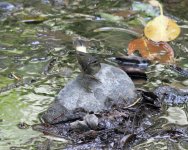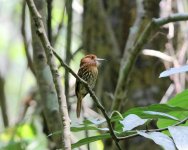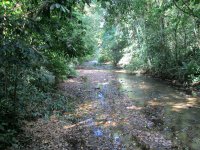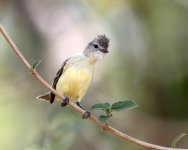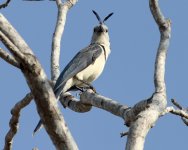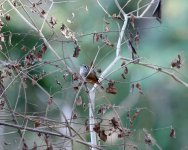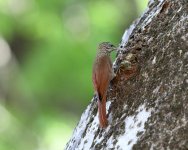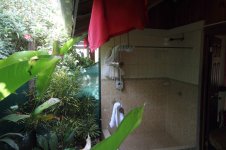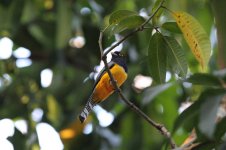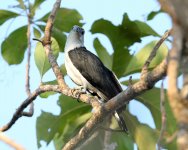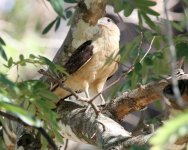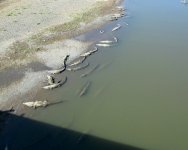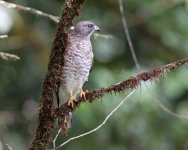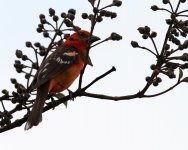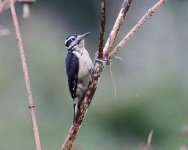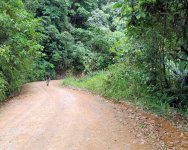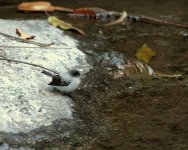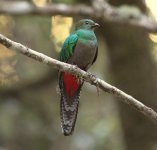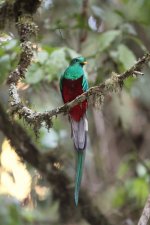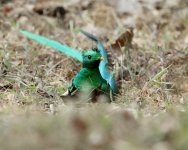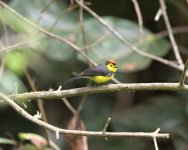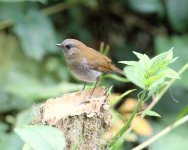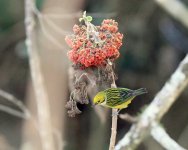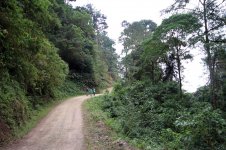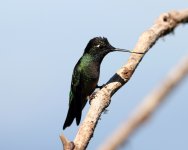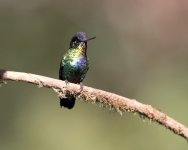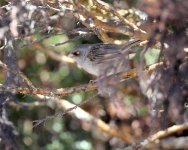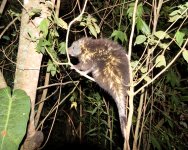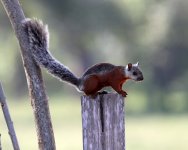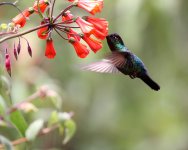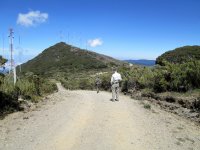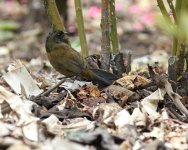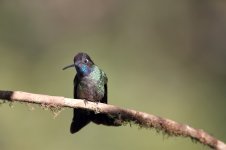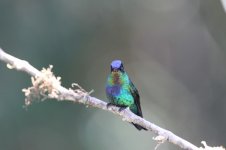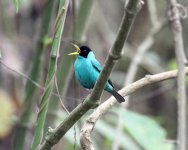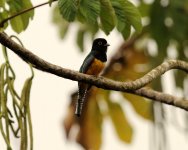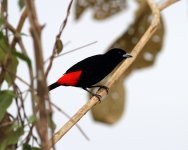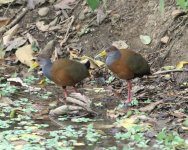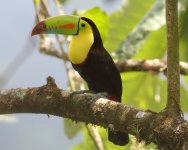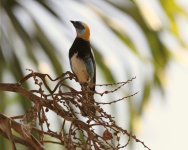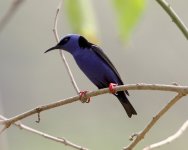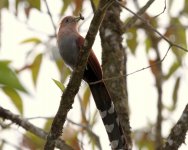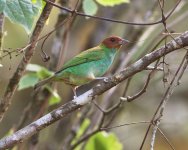ptickner
Well-known member
This March I had the pleasure of taking my parents on a do-it-yourself Costa Rica birding trip. We would take advantage of local knowledge and use local guides, but I was in charge of arranging all transportation, lodging, and meals. In the last ten years my parents had been to Ecuador seven times and Panama twice, so needless to say I felt a little pressure to get good birds and to have things run smoothly!
After countless hours of scouring BirdForum trip reports and forums and Barrett Lawson's A Bird Finding Guide to Costa Rica, I decided on an itinerary of a couple of days in the Monteverde area, a couple of Pacific Coast days in the Carara area, and then a couple of days in the highlands in the Copey/Dota area. My thought was that we would have a good general overview of Costa Rica birding without an excessive amount of time spent sitting in a car. With a travel day on each end, the ten day trip would give us eight days of birding, although some of those days would have the afternoon be spent traveling. Birds mentioned in the report are some of the highlight species, and are by no means a complete inventory of what was seen.
Some final statistics:
Total bird species seen: 282
Total bird species heard only: 39
Mammal species seen (non-domesticants): 9
Times woken up by porcupine chewing on cabin steps: 3
Miles driven: 575 (925 km)
Rivers driven through: 1
Scary homemade bridges driven over: 1
Times driver muttered "Estoy un poco perdido": no comment
Crocodiles at the Tarcoles Bridge: 37
Frogs in toilets: 1
Day 1 13 March 2014
After arriving into the San Jose airport (actually in Alajuela) late the night before, we allowed ourselves a relatively late breakfast of 6:30 am at the hotel before hitting the road. I had rented a Daihatsu Bego from Wild-Rider for the week. While certainly not a luxury SUV, it proved more than up to the task and would end up being a great choice for the week, although a little more horsepower would have been nice. We headed out onto the Pan American Highway (Hwy 1) towards the Pacific coast and our morning destination of Chomes and the shrimp ponds. It was just about 2 hours before we turned onto the Chomes road. On various maps the road shows up as either 603 or Calle San Agustin, but there is a sign off of 1 towards Chomes. Even with the sign, it is easy to take the road to Punta Morales by mistake (found out the hard way).
We were hoping to find Double-Striped Thick-Knees in the grassy fields right off of the highway, but the prolonged dry season had those fields dry as could be and seemingly devoid of life, or at least of birds. After a few short unsuccessful stops we headed for the coast . With a short drive after a couple of turns in Chomes, we came to the ponds. The ponds had varying degrees of water in them, and most of the birds were concentrated in one mostly drained pond. Highlight species included Wood Storks, Roseate Spoonbills, and a myriad of heron species. There were shorebirds as well, including Marbled Godwits, Ruddy Turnstones, Black-Necked Stilts, Short-billed Dowitchers, and numerous Sandpipers. There may have been more, but in the interest of full disclosure, after living in Florida for 20 years, we were less than excited by shorebirds.
We then turned back north and headed towards Monteverde. Having been there before in the first week of June, I was amazed at how dry things were on the MV road. The dust was terrible, but the road was in pretty good condition. Despite all of the stories to the contrary, the road is only dirt for about 20km. We checked into our room at Casa Batsu, dropped off our bags, and headed out for lunch. We had a great late lunch in Santa Elena at La Salvadita, a small local lunch spot. We then went to check out the Hummingbird Gallery near the entrance to the Monteverde Reserve. We had 7 species of hummingbirds there including Purple-throated Mountaingems, Coppery-headed Emeralds, Stripe-taileds, and Magenta-throated Woodstars, as well as the always fun to see Bananaquit. We had 3 Resplendent Quetzals fly over us as we left the gallery, which I took as a good sign of things to come. Still recovering from the previous day's traveling, we turned in early.
After countless hours of scouring BirdForum trip reports and forums and Barrett Lawson's A Bird Finding Guide to Costa Rica, I decided on an itinerary of a couple of days in the Monteverde area, a couple of Pacific Coast days in the Carara area, and then a couple of days in the highlands in the Copey/Dota area. My thought was that we would have a good general overview of Costa Rica birding without an excessive amount of time spent sitting in a car. With a travel day on each end, the ten day trip would give us eight days of birding, although some of those days would have the afternoon be spent traveling. Birds mentioned in the report are some of the highlight species, and are by no means a complete inventory of what was seen.
Some final statistics:
Total bird species seen: 282
Total bird species heard only: 39
Mammal species seen (non-domesticants): 9
Times woken up by porcupine chewing on cabin steps: 3
Miles driven: 575 (925 km)
Rivers driven through: 1
Scary homemade bridges driven over: 1
Times driver muttered "Estoy un poco perdido": no comment
Crocodiles at the Tarcoles Bridge: 37
Frogs in toilets: 1
Day 1 13 March 2014
After arriving into the San Jose airport (actually in Alajuela) late the night before, we allowed ourselves a relatively late breakfast of 6:30 am at the hotel before hitting the road. I had rented a Daihatsu Bego from Wild-Rider for the week. While certainly not a luxury SUV, it proved more than up to the task and would end up being a great choice for the week, although a little more horsepower would have been nice. We headed out onto the Pan American Highway (Hwy 1) towards the Pacific coast and our morning destination of Chomes and the shrimp ponds. It was just about 2 hours before we turned onto the Chomes road. On various maps the road shows up as either 603 or Calle San Agustin, but there is a sign off of 1 towards Chomes. Even with the sign, it is easy to take the road to Punta Morales by mistake (found out the hard way).
We were hoping to find Double-Striped Thick-Knees in the grassy fields right off of the highway, but the prolonged dry season had those fields dry as could be and seemingly devoid of life, or at least of birds. After a few short unsuccessful stops we headed for the coast . With a short drive after a couple of turns in Chomes, we came to the ponds. The ponds had varying degrees of water in them, and most of the birds were concentrated in one mostly drained pond. Highlight species included Wood Storks, Roseate Spoonbills, and a myriad of heron species. There were shorebirds as well, including Marbled Godwits, Ruddy Turnstones, Black-Necked Stilts, Short-billed Dowitchers, and numerous Sandpipers. There may have been more, but in the interest of full disclosure, after living in Florida for 20 years, we were less than excited by shorebirds.
We then turned back north and headed towards Monteverde. Having been there before in the first week of June, I was amazed at how dry things were on the MV road. The dust was terrible, but the road was in pretty good condition. Despite all of the stories to the contrary, the road is only dirt for about 20km. We checked into our room at Casa Batsu, dropped off our bags, and headed out for lunch. We had a great late lunch in Santa Elena at La Salvadita, a small local lunch spot. We then went to check out the Hummingbird Gallery near the entrance to the Monteverde Reserve. We had 7 species of hummingbirds there including Purple-throated Mountaingems, Coppery-headed Emeralds, Stripe-taileds, and Magenta-throated Woodstars, as well as the always fun to see Bananaquit. We had 3 Resplendent Quetzals fly over us as we left the gallery, which I took as a good sign of things to come. Still recovering from the previous day's traveling, we turned in early.
Attachments
Last edited:




